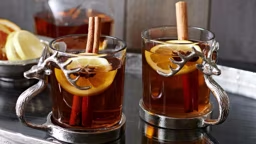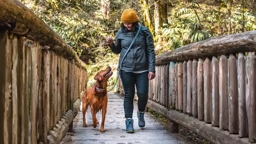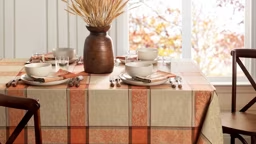
Activity Level: Mellow
1. Take advantage of two of winter’s attributes, darkness and chilly weather, and enjoy a fire. Either in an outdoor fire pit or flames in your wood stove, cooking becomes an adventure when using a pie iron, sandwich cooker, or pudgy pie maker. The possibilities of sweet and savory treats that come out of a pie iron are nearly endless. The most basic ingredients would be two slices of bread buttered on the outsides, then filled with your choice of jam or cheese and meat. But you can use anything from croissants with curry to biscuit mix and pie filling. Assemble your meal on one side, close the cooker and hold over the campfire for a few minutes, flip, and you’ve got our own DIY turnover or pasty.
2. Try a read-aloud book session at the cabin starting with “The Long Winter,” part of the “Little House on the Prairie” series. It will make everyone, young and old, appreciate the warm cabin as one reads about the great snows of 1880–1881. These blizzards cut off a small South Dakota town from any supplies for months. The entire population’s fate wrested with two young men who left the settlement for the open prairie in search of a mysterious wheat cache.
3. Another culinary project with a big payoff begins with warming real maple syrup in a saucepan. When your candy thermometer reaches 235°, pour it over fresh, clean snow, and you’ve made a traditional maple taffy treat. Eat it fast before it turns back into syrup. I recommendd using Grade B syrup as it’s much darker than Grade A Medium Amber, a little thicker, and lends a stronger flavor for this memory-making dessert. (Though: Grade B can be pricey; feel free to substitute Grade A Dark Amber.)
4. The quiet cabin may be the perfect location to get in on this relaxation trend: adult coloring books. Yes, seriously! With hundreds of books featuring everything from patterns such as paisleys and decorative scrollwork to animals for color embellishment, there’s respite for everyone’s over-stimulated mind. So, channel your inner Van Gogh, choose a topic you enjoy, and color up a storm inside the comfort of your cabin.
5. Of course, winter doesn’t mean the end of grilling season. All the same recipes you use in the summer are fair game for chilly nights. Allow more time for the grill to heat up and once your dinner is inside, resist the urge to open the cover. And because the sun sets earlier, a grill-side lamp or headlamp may be in order for the grill master.
6. Adults may enjoy reading essays to one another, and it’s an activity they can surely finish and still have time to discuss before the fire dies down. The New York Times offers short and often hilarious pieces from their weekly “Lives” column.


Activity Level: Moderate
Now that you’re all warm and cozy, it’s time to go outdoors. Once you have your gear figured out, the biggest hurdle to getting outside is a mental one. Often the thought of being cold and uncomfortable far exceeds the reality. And like getting into a cold lake or river, there’s no other way than to plunge right in! It will bring more meaning to your season and according to some studies, enrich your mental and physical health, too.
7. If your cabin is in snow country, building a snow fort is a great group activity. Snow forts are not just for kids (and adult supervision adds safety anyway). When illuminated from within using low-powered LED lights, a fort can make a magical seasonal display to enjoy all winter long. Start by mapping out your structure using a stick to draw in the snow. From there, you can make snow bricks with plastic containers, coolers, or bread pans. Like real masons, be sure to stagger your bricks over each other as you move up the wall for additional strength. Pouring water down the sides of your structure will ice it over for lasting power.
8. Although the trails may not display leaves or wild flowers this time of year, hiking is a four-season sport. One advantage to diving into the winter woods is the windbreak. Stepping off an exposed field or lake and into the sheltering trees can turn a 20-degree day into an occasion to take off your scarf and gloves. But to experience that kind of warmth, you must be trekking at a good clip. Slip on a pair of traction cleats – like Yaktrax for moderate terrain or Kahtoola Microspikes for a more aggressive trail of packed snow or ice – and you can confidently move at a warming pace.
9. However, if you’ve experienced significant snow accumulation, you may need to distribute your weight with snowshoes to keep from breaking through. Considering the only skill needed to snowshoe is walking, it’s a great activity for the whole family. It burns up to 45% more calories than walking, so is healthful on many levels. The extra effort you invest by getting out in winter is often rewarded with quiet, uncrowded trails. Snow also showcases critter tracks, as well as other evidence of wildlife. And if you enjoy hiking in the height of summer, the sparse look of winter scenery can offer a lovely contrast.

Activity Level: Extreme
For the more adventuresome with a canine companion, skijoring may just be the excitement your winter needs. An import from Norway, this sport is no more than a person on skis being pulled by a dog.
10. It requires a belt with leg holes for the skier, akin to a climber’s harness, outfitted with some quick-release levers for safety. This attaches to a shock-absorbing line, approximately 8 feet long, then hitches to your dog’s special harness. Skiers employ either a traditional cross-country stride or a side-to-side ski skate technique. Full kits start at under $200.00. Resources include thedogoutdoors.com. Dogs must be well trained in basic commands for starting, left and right turns and of course, stopping – all best learned on foot before going out on the trails. While there are many resources – online, videos, books – finding a skijoring demonstration or club would be the best way to enter this exciting sport.
11. And for those looking for air, kite skiing is a relatively new sport done on ice or snow. It requires skis and a harness like skijoring, but the pull comes from a wind-harnessing kite. The kites are smaller versions of those used in paragliding. Check with local colleges or recreation clubs for kite skiing clinics. With kites starting at $1,200, you may want to be sure you have the right wind conditions in your area before you invest.
See also: The Best Rainy Day Activities for Kids at the Cabin










